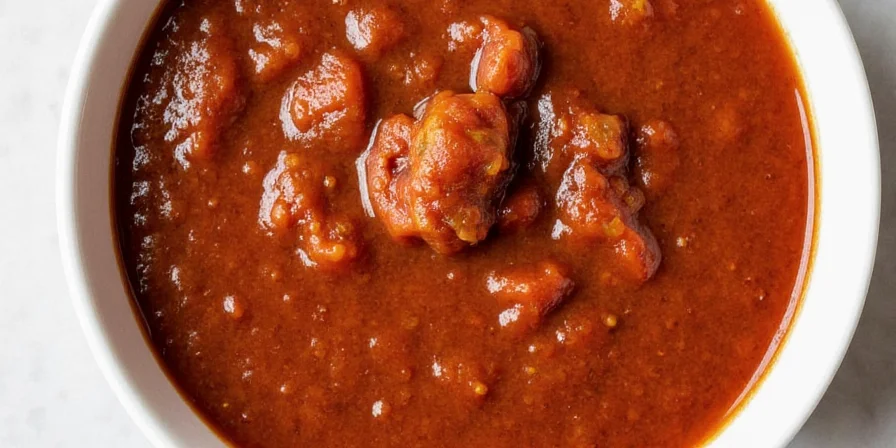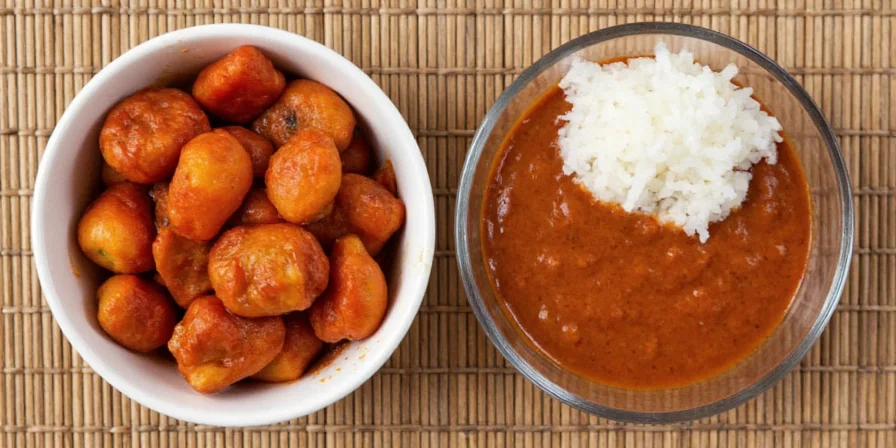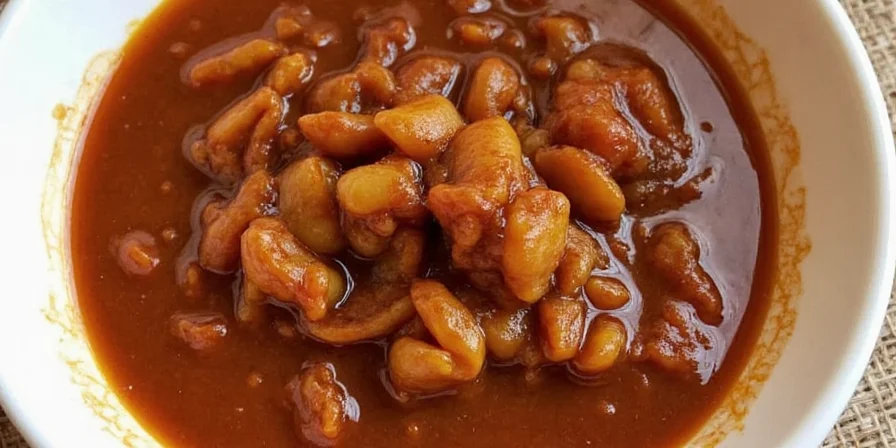Spicy Adobo Sauce: A Global Spice Tradition – From Mexico to Your Kitchen!
Are you ready to ignite your taste buds and explore the fiery soul of Global Spice Traditions? Then it’s time to dive into one of the most iconic and versatile sauces in world cuisine — spicy adobo sauce. This smoky, tangy, and spicy elixir isn’t just a flavor bomb; it’s a cultural passport that links us across continents. Whether you’re a seasoned chef or a curious foodie with a blender and a dream, this article is your guide to mastering spicy adobo sauce like a pro.
Table of Contents
- A Taste of History: The Origins of Spicy Adobo Sauce
- What’s Inside? Key Ingredients of Authentic Adobo Sauce
- From Mexico to Manila: How Adobo Sauce Travels Across Cultures
- Top 5 Tips for Making the Perfect Spicy Adobo Sauce at Home
- Beyond Tacos: Creative Ways to Use Spicy Adobo Sauce
- The Science Behind the Spice: Why Adobo Packs a Punch
- Storage & Shelf Life: Keep That Fire Burning
- Conclusion: Embrace the Heat and Flavor of Global Spices
A Taste of History: The Origins of Spicy Adobo Sauce
Before we fire up our blenders, let’s take a quick trip back in time. The word “adobo” comes from the Spanish verb adobar, which means “to marinate” or “to season.” But its roots run deeper than colonial history.
In pre-Columbian Mexico, indigenous peoples were already using chili-based pastes to preserve and flavor their meats. When the Spanish arrived, they brought vinegar and garlic, which mixed beautifully with native ingredients. Thus, modern spicy adobo sauce was born — a perfect marriage of old and new worlds.
Interestingly, the Filipino dish also known as “adobo” shares the name but differs greatly in preparation and flavor profile. More on that later!
What’s Inside? Key Ingredients of Authentic Adobo Sauce
The magic of adobo lies in its balance of heat, smoke, acidity, and sweetness. Here’s what goes into a classic Mexican-style spicy adobo sauce:
- Ancho, Poblano, or Chipotle Chilies: These give depth and mild to medium heat.
- Vinegar: Apple cider or white vinegar adds acidity and helps preserve the sauce.
- Garlic: For that unmistakable savory kick.
- Tomatillos or Tomatoes: Some recipes include them for brightness.
- Spices: Oregano (preferably Mexican), cumin, cloves, and cinnamon bring warmth and complexity.
- Sugar or Molasses: Balances the acid and spice with a touch of sweetness.
- Oil: Helps emulsify everything and deepens the flavor.

From Mexico to Manila: How Adobo Sauce Travels Across Cultures
You might be surprised to learn that while “adobo” refers to a sauce in Mexico, it’s an entire cooking technique in the Philippines! So how did these two distant cousins come to share the same name?
Let’s break down the global variations of adobo:
| Culture | Type of Adobo | Key Ingredients | Flavor Profile | Common Uses |
|---|---|---|---|---|
| Mexico | Adobo Sauce | Chilies, vinegar, garlic, spices | Smoky, tangy, moderately spicy | Marinade for meats, especially chipotle in adobo |
| Philippines | Adobo Dish | Soy sauce, vinegar, garlic, peppercorns | Savory, acidic, mildly garlicky | Cooking method for chicken, pork, seafood |
| Caribbean | Adobo Seasoning | Salt, garlic powder, oregano, pepper | Savory, herbaceous, salty | Dry rub for meats and vegetables |
So whether you're grilling skirt steak in Cancun or simmering pork belly in Manila, adobo is all about preservation and flavor enhancement — just different strokes for different folks!
Top 5 Tips for Making the Perfect Spicy Adobo Sauce at Home
If you’ve ever made adobo sauce from scratch, you know that not all batches are created equal. Sometimes it’s too bitter, sometimes too thin, or worse — bland. Fear not! Here are five insider tips to ensure every batch is restaurant-worthy:
- Toast Your Spices: Don’t skip dry-toasting your cumin, oregano, and cloves. It unlocks essential oils and deepens flavor exponentially.
- Use Fresh Garlic: Pre-minced garlic lacks punch. Crush fresh cloves for maximum aroma.
- Blend Thoroughly: If your sauce feels gritty or separates, add a splash of oil and blend again until smooth.
- Balance Sweet & Acidic: Adjust sugar/molasses and vinegar to suit your palate. Taste as you go!
- Rest the Sauce: Letting it sit for a few hours (or overnight) allows flavors to marry beautifully.
Beyond Tacos: Creative Ways to Use Spicy Adobo Sauce
Once you’ve mastered the sauce, don’t stop there! Here are some unconventional yet totally delicious ways to use it:
- Drizzle over scrambled eggs for a spicy morning kick.
- Marinate chicken wings before grilling or baking.
- Mix into mayo or sour cream for a zesty sandwich spread.
- Add a spoonful to soups or stews for extra depth.
- Brush onto grilled veggies for a smoky finish.
- Make adobo Bloody Mary mix — yes, really!

The Science Behind the Spice: Why Adobo Packs a Punch
Ever wondered why adobo sauce makes your eyes water and nose run? It’s all thanks to **capsaicin**, the compound found in chilies that activates pain receptors in your mouth.
But here’s the twist — the body interprets this sensation as heat, even though no actual temperature change occurs. And the more capsaicin, the spicier it feels!
Additionally, the acidity from vinegar increases saliva production and enhances perception of spice. That’s why adobo can feel so intense even with moderate heat levels.
Storage & Shelf Life: Keep That Fire Burning
To enjoy your homemade adobo sauce for weeks (or months), proper storage is key:
- Store in an airtight glass jar in the refrigerator — lasts up to 4 weeks.
- Freeze in ice cube trays for easy portion control — keeps for up to 6 months.
- For longer shelf life, sterilize jars and process in a hot water bath — canned adobo can last up to 6 months unopened.
Conclusion: Embrace the Heat and Flavor of Global Spices
Spicy adobo sauce is more than just a condiment — it’s a bridge between cultures, a testament to human ingenuity, and a celebration of bold flavors. Whether you stick to the traditional recipe or experiment with local twists, remember: making adobo at home is a culinary adventure worth taking.
So grab your blender, dust off those spices, and get ready to embrace the smoky, spicy soul of Global Spice Traditions. Your taste buds will thank you — maybe after shedding a happy tear or two.











 浙公网安备
33010002000092号
浙公网安备
33010002000092号 浙B2-20120091-4
浙B2-20120091-4